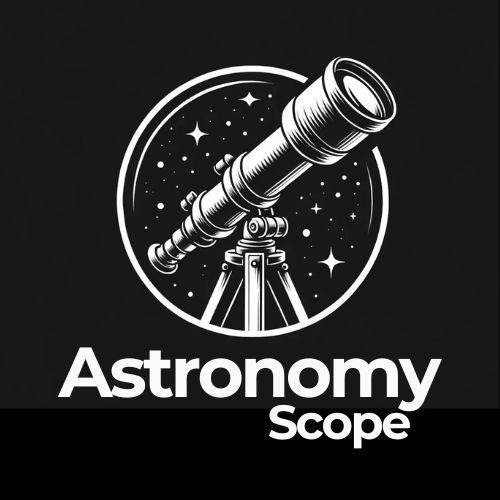If you are looking to clean your telescope lens, then I would expect that you are very cautious about actually doing it yourself.
The truth is, there’s no need to worry; it’s actually a very simple process and you can get your lenses clean and clear in just a few steps.
If you have stored your Telescope away, then one of the most effective things you can do to improve its effectiveness, is to go ahead and clean your lenses.
In this step by step guide, I’m going to outline to you the safest and most recommended way to clean the lenses of any optical equipment you own (not just your telescope!). This will also work for camera lenses, binoculars etc.
Before we begin, first acknowledge the following:
Never attempt to clean the mirrors of a Reflector Telescope
Mirrors are completely different to Lenses, and to ensure that you do not scratch or damage them, it is best to have them cleaned by a professional.
Nonetheless, cleaning your telescope lens will still require your utmost attention, some time, and a reputable cleaning kit (this is the one I swear by). The good news is it can be done easily and effectively right from the comfort of your own home.
So without further ado, how do you clean a Telescope Lens?
How To Clean A Telescope Lens
As you are probably aware, the lens is the most important component of your telescope. Keeping it clear and scratch-free is therefore essential; so you need to ensure that you do not cause damage during the cleaning process.
If you follow the five steps below, you will effectively clean your telescope and completely mitigate potential causes of damage.
Here’s how to use this guide
Start with step one, and only complete as many steps it takes until your Telescope is clear.
In other words, if you notice that after step two your lens is completely clean. That’s it you’re done. You do not need to continue through the remaining steps.
This will ensure that you completely clean your Lens and reduce any risk of damage.
Step One – Protect your Telescope Lenses
Simple, gentle cleaning can actually cause small scratches on your Telescope Lens (or coating).
So, the best thing that you can do is to keep your Telescope from getting to dirt in the first place!
The Telescope Lens Cap is an excellent way to protect and to prevent any dust or other dirt from collecting. Just drop the cap over the Telescope whenever you are not using it or storing it away.
If you’re telescope does not come with a Lens Cap, you can always improvise and use Saran Wrap.
Likewise, the lenses of your eyepieces require similar protection.
I would advise that you regularly put them in their protective case (or you could use a resealable sandwich bag if you do not have a case).
Interestingly, by using the eyepiece you are likely to make it dirty. This is especially true if your eye(s) get too close or you accidently touch them (which is one of those things that is hard to completely avoid).
Unfortunately, oil can come off your eyelashes and soak onto the surface of your lens (which is hard to detect and prevent!)
If you notice that this happens regularly, by looking through the eyepiece from a further distance could make all the difference.
Step Two – Remove Dust with Air
If you look at your Telescope Glass Lens and notice dust, it is essential that you remove it as quickly as you can.
This is because small particles, even microscopic dust particles, can cause scratches and other damage to your Lens its coating.
Naturally, you may immediately think to scrub, wipe or blow the dust off.
Do Not Do This
Your breath is abundant in water particles which, if land on your Telescope Lens (as will be the case with blowing), will cause further damage.
Another thing you want to avoid is using a Hairdryer. The hot air that a Hairdryer emits can cause damage to your Telescope – particularly if your Telescope overheats.
So instead, if you do decide that you want to remove some of the dust; the counterintuitive approach that works is to ‘suck the dust off’.
I know what you’re thinking.
But if you cover the end of your Telescope (just above the lens) using your fingers, you can suck in air (and the dust) from an angle.
This works, because it pulls air from and across the entire surface of the lens and you are removing the dust without depositing any water.
Now, this isn’t ideal; for a start you don’t really want to be inhaling dust.
Thankfully, there are a number of alternative approaches that will protect your lungs in the process.
Getting a reputable optical cleaning kit is one of them. I personally use and have great experience with this highly recommended one from Orion. (It is available on Amazon).
It’s great because it comes with an Air Blower, and you can use this to effectively, quickly and safely remove all dust (both visible and invisible) from your Telescope Lens.
This is how it works. It sucks clean air from one end, and then as you squeeze the bulb, it blows that very air out as a strong jet through the nozzle end.
Alternatively, you could opt for Compressed Air, but you need to be a lot more careful when cleaning with this.
Step Three – Remove Dust with a Brush
By moving in order through the five steps in this article, you are ensuring that you get the best clean whilst completely minimizing any chances of damage.
As such, if you are happy with how your Lens now looks since blowing the dust off, it may be a good idea to stop here.
If your Lens still shows signs or dirt or requires further cleaning, then it’s time to use a soft brush.
It is recommended that you always work with a very soft brush. Ideally, you should also take care of where you store the brush; like in a bag when not in use.
This will ensure it doesn’t accumulate any dust itself which you then risk applying!
I like to actually use the Air Blower on the brush each and every time I decide to use the Brush.
This ensures that it is always as clean as possible and not just collecting the dust that was the Telescope Lens and being reapplied.
With your brush, gently stroke your lens to remove any dust. The gentler and light you can be with your strokes the better. Start at the centre of the lens and brush to the outer sides.
Sometimes I like to undertake both the Air Blowing and Brushing Steps together.
Step Four – Use a Specialised (Microfibre) Cloth
By this step, you should notice that all of the dust and dirt that resided on the surface of your lens has been removed.
As previously started, you may even want to stop here.
Here’s the tell-tale sign that you need to continue; you can see fingerprints, moisture or eyelash oil on your Telescope Lens.
If this is the case, you are going to want to get a Specialized Microfibre cloth and gently rub your Lens.
Start off with using the cloth when it is dry and avoid using cleaning fluid straight away.
Following the use of the dry cloth, if you do still notice oil or signs of moisture, then use a clean piece of your cloth, fog the lens by breathing on it and then gently rub once more with the cloth.
Sometimes, this is all that is required to finish of the cleaning of your lens.
Other times, you will notice that some grease is still visible after gentle rubbing. (Remember, never rub with too much force as this can cause damage or scratching!).
If this is the case it is recommended that you use some lens cleaning fluid to finish the job.
Step Five – Use Lens Cleaning Fluid
This is the last step which is only usually required if you notice a smudge on your lens and you have been unable to remove it with Air or the Dry Microfibre Cloth.
If this is the case, add a couple of drops (less is more) to your Microfibre Cloth.
Always avoid dropping the cleaning fluid straight onto the lens.
This is because it can drop or pull towards the edges of the lens and actually cause more problems (like pulling dirt into the edges of your Lens).
With a light circle motion, start with your cloth from the centre of the lens and make your way to the edges.
Once you have done this, turn the cloth over (or use the remaining dry part) and take off any of the lens cleaning fluid that still remains on the surface of the lens.
If you want more precision, sometimes adding some cleaning fluid to a Q-Tip will help in being more specific.
Always be as gentle as you can, and apply the least amount of force possible to see results. You do not want to scratch your lens!
This is it! By now, you should have a very clean Telescope Lens in optimal condition for your next stargazing.
Cleaning A Telescope Lens Summary
Cleaning your Telescope Lens is easy once you know how. Here are some of the things to consider before, during or after your cleaning.
- Do not follow this guide when cleaning the mirror(s) of a reflector
- Never remove the lens from the scope to clean them
- Clean your Telescope Lens as infrequently as possible; typically, once a year should suffice.
- If you live in an area that has a lot of Pollen and Mold, then it may be a good idea to clean your Telescope Lens more frequently.
- Using an Air Blower is always the preferred option; and frequently using one will prevent the need for further cleaning most of the time.
- The Orion’s Telescope Cleaning Kit available on Amazon is ideal for cleaning Telescope Lens – it was created specifically for this task.
- Always be vigilant on how clean your lenses are. They can actually hold a lot of dust and dirt before their performance starts to reduce. Its only when you see a drop in performance that you should consider cleaning.
- The Less you need to clean your Telescope Lenses the better; be sure to store your Telescope in the best conditions and remember to keep the cleaning utensils in an equally protected place.

Hey, my name is Jeremy. I’m a passionate and seasoned astronomer who loves nothing more than observing the night sky. I also love researching, learning, and writing all things Space and the Universe. I created Astronomy Scope to share my knowledge, experience, suggestions, and recommendations of what I have learned along the way while helping anyone to get into and maximize their enjoyment of the hobby.

